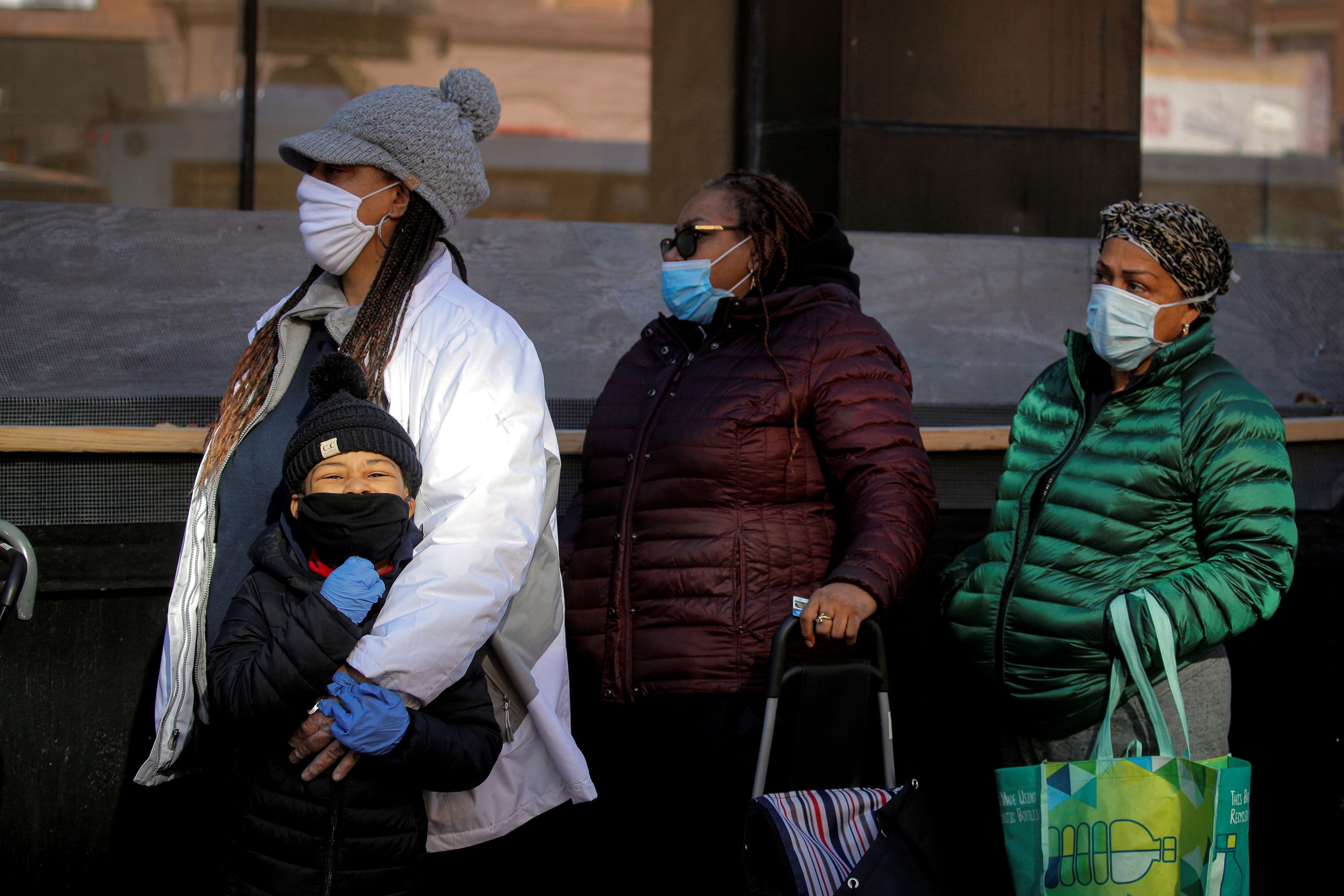People line up to receive free holiday boxes of food from the Food Bank For New York City ahead of the Thanksgiving holiday, as the global outbreak of the coronavirus disease (COVID-19) continues, in the Harlem neighborhood of New York, U.S., November 16, 2020.
Brendan McDermid | Reuters
The surprise jump in new jobless claims filings to the highest level since mid-September signals a weakening in the labor market that could drag down the economy into the first quarter.
Initial claims for state unemployment benefits jumped to 853,000, rising 137,000 during the week ended Dec. 5 from the prior week, the largest weekly increase since the height of economic shutdowns in March. Economists had expected 730,000 claims, according to Dow Jones. They note the Thanksgiving holiday period could have added distortions in both weeks, but the trend is clearly negative.
State continuing claims rose by 230,000 to 5.76 million, the first increase since August.
“It looks like the unemployment losses are starting to stack up for the economy. It’s not going to be a good month,” said Chris Rupkey, chief financial economist at MUFG Union Bank. “You’re starting the first week of the month on a bad note, and it’s probably going to be all downhill from here. It feels like the lockdowns are intensifying. It’s closer to reality for those forecasts that look for the economy to go negative in the first quarter.”
The improvement in the labor market has been showing signs of slowing. November’s 245,000 increase in payrolls was about 200,000 below expectations and well below October’s addition of 610,000 jobs.
“The seasonal factors tell you the first week of December is always a disaster with a lot of winter weather layoffs. This is traditionally the start of winter, if you’re a worker and doing outside work,” Rupkey said. He noted the data without seasonal adjustments showed a bigger jump of 228,982 to 947,500. “There’s some catch-up here but the skies look like they’re darkening with some states in lockdown, especially California which is 10% of the population. It’s going to get worse.”
Economists expect an average 3% growth in first quarter GDP, after a forecast 3.8% growth rate in fourth quarter GDP, according to CNBC/Moody’s Analytics Rapid Update. Some economists expect a flattish quarter for growth, and JPMorgan has said it sees a contraction in first quarter GDP.
Rupkey said he expects the economy to pick up again after vaccines are widely distributed. “That’s a second quarter or late first-quarter story,” he said.
Jobless claims data has been viewed by economists as a steady early warning signal for the labor market, as claims reflect actual layoffs. However, during the pandemic, the data has been difficult to read, and also needs to be considered alongside the numbers of workers claiming benefits under special federal programs.
“We think this recent weakening in the data likely reflects deterioration in the labor market associated with virus-related developments. But other factors also could be at play, and the data can be noisy around the holiday season,” JPMorgan economists noted.
The majority of workers collecting benefits fall under special pandemic programs, funded by Congress and set to expire at the end of the year. The programs cover gig workers and individuals who may have run out of other benefits.
The Labor Department said that in the week ending Nov. 21, the total number of continued claims in all programs was 19 million, a decrease of 1.1 million from the previous week.
There were 427,609 individuals filing for Pandemic Unemployment Assistance in the week ended Dec. 5, an increase of 139,375 from the week earlier.
“Part of it is catch-up, but the trend is in the wrong direction,” Grant Thornton chief economist Diane Swonk said of the weekly increase. She said about 13 million people are covered by the programs that are about to expire.
Congress has been dithering about more stimulus since the summer, and is now working toward reaching a deal on a plan by next week. “They need stimulus now. This is a gut punch. I knew it would be bad, but this is worse than we expected,” Swonk said.
She said the layoffs are likely to snowball in December, and the economy is likely to show flat or negative growth in the first quarter.
“There’s no question we’re going to end [December] on a weak note. What we don’t know is how spending is going to hold up. This is a wakeup call,” she said. “Congress has turned a deaf ear to the screams of the unemployed who can’t feed their families. The chorus is getting louder.”
